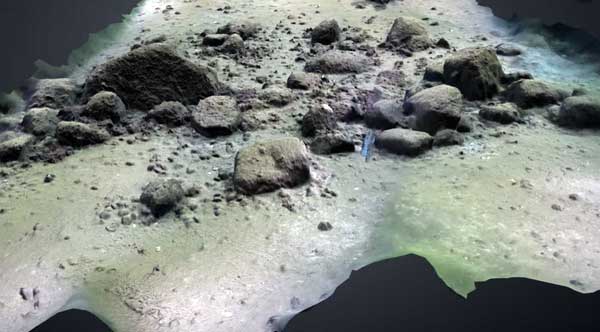February, 2024
Thousands of years ago, people used long walls to enclose herds of animals. A research group has probably found such a wall on the seabed between Denmark and Germany.

Even before they settled down, our Stone Age ancestors erected monumental buildings.
Now a research group has discovered boulders in the Baltic Sea that are lined up to form a 971-metre-long wall. They assume that it was created by human hands. "Illustreret Videnskab" writes this on the basis of a scientific article in the journal "Proceedings of the National Academy of Sciences".
The wall is now 21 meters below the surface of the sea, but was only flooded 8,000 years ago. The research team assumes that it was built at least 2,000 years earlier. It is said to have been used for reindeer hunting.
Natural processes ruled out
Jacob Geersen from the Leibniz Institute for Baltic Sea Research in Warnemünde discovered the wall by chance together with colleagues. In 2021, they noticed the unusual structure during an acoustic survey of the seabed on the eastern edge of Mecklenburg Bay.
First time in Central Europe
Similar walls have previously been found in Greenland, North America, Norway and Turkey, but this is the first discovery of this type in Central Europe. Archaeological finds prove that they served as traps for herds of wild animals. Stone Age people drove reindeer along the walls into a lake or swamp where they could kill them more easily.

This is a really exciting discovery - not only because of its age, but also because it can help us to better understand the way of life of early hunter-gatherer communities, said the research team according to "scinexx.de".
Senior researcher David John Gregory from the National Museum in Copenhagen is also enthusiastic about the find: "It can help answer many questions about how people organized themselves socially during this period."